While there are an increasing number of professors engaged in cold fusion research at schools and colleges, not all departments and schools officially support that activity.
In some cases, research is fully-endorsed and funded, such as at University of Missouri and University of Illinois Urbana-Champaign.
At other schools, faculty is forced to conduct research without official funding. This is the case at one of the premier scientific research institutions in the U.S., the Massachusetts Institute of Technology.
In all cases, funding is small, and because of the hostile environment, many of the professors who would love to teach you about cold fusion, low-energy nuclear reactions (LENR), lattice-assisted nuclear reactions (LANR), quantum fusion, and the Anomalous Heat Effect (AHE), will tell you that the job prospects for research in the field are nil. They may even try to talk you out of pursuing the study of our future energy source.
It is shameful that those who would share their two-decades of experience in cold fusion research cannot take students in good conscience because they cannot guarantee any job opportunities upon graduation.
But we know that will not always be the case.
The increasing interest in cold fusion science and technology parallels the decline in availability of cheap fossil fuels, and the lack of viable solutions from the conventionally-minded scientists who’ve been successful at lobbying for funding without delivering the goods.
Each of the professors listed below will give you an education that draws on their own experience in cold fusion research, ranging from experimentalists, theorists, and policy-making, with LENR as a centerpiece.
Globally, there is friendly faculty on every continent and an inventory of the educational opportunities in cold fusion worldwide is forthcoming in part II. What follows is a partial list of schools in the U.S. with cold fusion-friendly faculty, alphabetical by school.
More schools will be added to make a full directory of places you can go to learn about creating energy solutions from the truly bold and courageous scientists of our time.
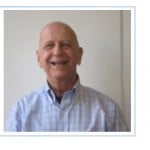
Washington, D.C. USA
School of Engineering and Applied Science
Research Professor David J. Nagel
Dr. Nagel’s interests span multi-disciplinary technologies including the development and applications of micro- and nano-technologies, including micro-fluidics and wireless sensor networks, and condensed matter nuclear science, and particularly LENR.
He established NUCAT Energy, Inc to hold workshops for academia, agencies, and industry on LENR and reports regularly on the field for Infinite Energy magazine.
Professor Nagel has been interviewed by Cold Fusion Radio several times. Excerpts from the most recent audio interview are here in “LENR global impact will be historic“. In the interview “A Reasoned Approach to Funding“, he described his plan for a federal effort to bring this science to a usable technology.
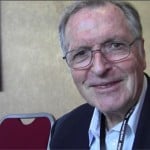
Urbana-Champaign, Illinois, USA
Nuclear and Electrical Engineering Department
Professor Emeritus Dr. George H. Miley
Dr. Miley researches unique cold fusion cells using thin-films and nano-particles. He has presented a LENR-based General Purpose Heat Source for spacecraft power needs and established the company LENUCO to commercially-develop some of their nano-technology discoveries producing transmutation elements.
Cold Fusion Now highlighted his work in the interview “Let’s Find Out What’s There” conducted at the Nuclear and Emerging Technology for Space (NETS) conference.
His students get the opportunity for hand-on experience in the lab constructing and testing LENR cells in the Fusion Studies Lab and in particular, at the LENRs Lab.
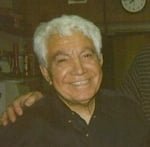
LaVerne, California, USA
Chemistry Department
Chairman of Chemistry Professor Dr. Iraj Parchamazad
Dr. Parchamazad investigates deuterium gas-loaded nano-palladium in zeolites. He is now collaborating with Dr. Melvin Miles, a former professor at the college and long-time Navy researcher with expertise in electrolytic co-deposition techniques.
Cold Fusion Now highlighted his research in the video “Low-Energy Nuclear Reactions (LENR) with Zeolites“.
Enrolled chemistry students have the opportunity for direct experience in conducting laboratory research using a full-spectrum of diagnostic equipment.
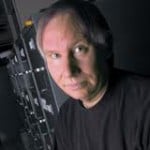
Boston, Massachusetts, USA
Electrical Engineering Lab
Professor Dr. Peter Hagelstein
Professor Hagelstein engages in theoretical work on cold fusion and collaborates with Dr. Mitchel Swartz of JET Energy, builder of the NANOR cell.
Together, they team-teach the MIT IAP short course Cold Fusion 101 held in the end of January. Enrollment in the course is open and includes demonstrations of a live NANOR cell.
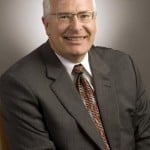
Columbia, Missouri, USA
Institute for Nuclear Renaissance
Vice Chancellor of Research Dr. Robert Duncan
Dr. Duncan has spearheaded the research into the Anomalous Heat Effect (AHE) at University of Missouri by bringing Energetics Technologies to the University business park and helping to create the Sidney Kimmel Institute for Nuclear Renaissance.
He has marshaled many departments in the research effort, and there are multiple opportunities for a student of cold fusion to learn.
Dr. Duncan and University of Missouri will be hosting ICCF-18 in July 2013, along with Purdue University and University of Illinois at Urbana-Champaign.
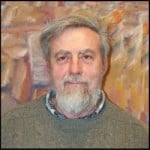
Portland, Oregon, USA
Physics Department
Professor Emeritus Dr. John Dash
Professor Dash has been training students in the art of electrochemical cells since the mid 1990s in from the Portland, Oregon area.
He has conducted summer workshops for high-school students and they have held public demonstration of cold fusion cells and presented lab results at conferences and colloquia.

Lafayette, Indiana, USA
Physics Department
Professor Dr. Yeong E. Kim
Dr. Kim is a nuclear physicist and Director of the Center for Sensing Science and Technology at Purdue University, where the detection of radioactive and hazardous materials are developed as a technology.
He is also a theorist in condensed matter nuclear science and has modeled the reaction using Bose-Einstein Condensates. He has presented at many conferences, including NETS 2011 attended by Cold Fusion Now and summarized in Session 462 Advanced Concepts.
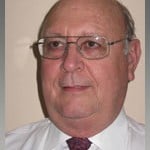
Austin, Texas, USA
Lyndon B. Johnson School of Public Policy and the Energy Institute
Professor Dr. Thomas Grimshaw
This school researches and prepares policy reports for government officials and legislators and Dr. Grimshaw always includes LENR in their energy surveys.
A policy report by the Johnson School of Public Policy from 2009 “Shaping the Energy Technology Transition” is available online for free as a .pdf.
Their most recent report includes cold fusion and is available from the school as a hard copy.
Part II will list high schools, colleges and universities with cold fusion-friendly faculty globally.
